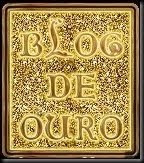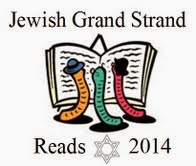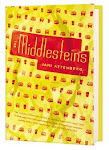SARA HOUGHTELING TO RECEIVES HAROLD U. RIBALOW PRIZE
Author of Pictures at an Exhibition receives annual literary award
NEW YORK – Hadassah Magazine presents the 2010 Harold U. Ribalow Prize at a 3:30 p.m. ceremony on January 31 in New York. Every year, Hadassah Magazine honors an author who has created an outstanding work of fiction on a Jewish theme.
This year’s winner is Sara Houghteling, author of Pictures at an Exhibition, which was published in 2009. Set in Paris in the 1930s and 1940s, Houghteling’s first book tells the story of Max Berenzon, the son of a French Jewish art dealer, as he searches the city for his father’s art, stolen by the Nazis during the Holocaust.
Houghteling was chosen by an independent panel of judges that included Elie Wiesel, N. Scott Momaday and Peter Manseau, the 2009 Ribalow Prize winner. A nominating committee consisting of three members of the Ribalow family and three representatives from Hadassah Magazine identified the initial list of nominees, which was then sent to the judges.
“It’s a humbling honor to receive this award and to know that Dr. Wiesel read my novel – his writings have been a moving, powerful presence throughout my life,”Houghteling said. “One of the wonderful aspects of receiving this award is that my parents and I have heard from our family and friends all over, some long-lost and far-flung. It gives me a renewed sense of my connection to other members of the Jewish community.”
Among the writers who have received the prestigious Harold U. Ribalow Prize since its inception in 1983 are Aharon Appelfeld, Louis Begley, Joseph Epstein, Jonathan Safran Foer, Todd Gitlin, Dara Horn, Anne Michaels, Francine Prose and Tamar Yellin.
About the Author: Sara Houghteling, originally of Brookline, Mass., graduated from Harvard College, then received a master’s in fine arts from the University of Michigan. She spent a year in Paris as a Fulbright scholar, and recently from a fellowship at the Camargo Foundation in Cassis, France. Pictures at an Exhibition was a National Jewish Book Award finalist and was named a New York Timeseditors’ pick. She is the recipient of the Moment Magazine Emerging Writer Award, a Wallant Award and first prize in the Avery and Jules Hopwood Awards, as well as a John Steinbeck Fellowship. Her writing has appeared in the San Francisco Chronicleand the New York Times. She currently lives in Berkeley with her husband, fellow author Daniel Mason.
About the Award: Hadassah Magazine’s annual literary award for outstanding Jewish fiction was established in 1983 by the friends and family of the late Harold U. Ribalow, an editor and writer known for his passion for Jewish literature and his interest in promoting the work of many now-famous Jewish writers. Ribalow was inducted posthumously into the International Jewish Sports Hall of Fame in 2009 for his contributions to society through Jewish sports writing.
Founded in 1912, Hadassah, the Women’s Zionist Organization of America, is the largest women’s, largest Zionist, and largest Jewish membership organization in the United States. In Israel, it supports medical care and research, education and youth programs, and reforestation and parks projects. In the United States, Hadassah promotes health education, social action and advocacy, volunteerism, Jewish education and research, Young Judaea and connections with Israel. For more information, visit www.hadassah.org.




















.jpeg)








